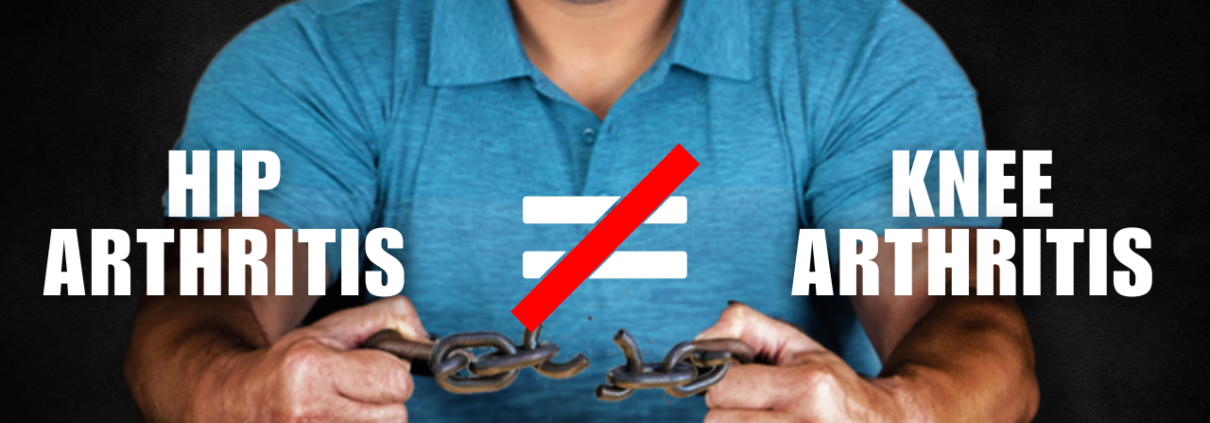How To Tell If You Have An MCL Injury In Your Knee
Have you been told that you have an MCL injury inside your knee? It’s usually on the inside of the knee joint. And there’s typically some sort of trauma associated with this, like you’re in a sports accident, car accident or some sort of accident. They look this up. In some cases, this does begin to happen without any sort of accident.
In today’s video, I’m going to explain exactly what an MTL injury is, how to find it on yourself, and what are the things that could be besides an ACL injury so that you have the best information possible to make the next best choice about your knee problem.
My name is Dr. David Middaugh, and I’m a specialist physical therapist at El Paso manual physical therapy. This channel is dedicated to helping people stay healthy, active and mobile. while avoiding unnecessary surgery, injections and pain medications. Please subscribe to our channel so that you don’t miss out on any of the helpful videos that we post every single week.
To help me out of my explanation of an MC l injury. I’ve drawn this picture for you and written up some labels for the picture. So what is an MC l injury? Just story, it’s right here in brown on the top right here. This is your thigh bone. And here’s your shin bone in the bottom and you’re looking at the right knee.
I didn’t label it that way. But it’s important to know the right from the left because the smcl right here in red is always going to be on the inside of the knee. So if I were to draw on the left knee that we’d have to flip flop the sides. But if you reach down to your knee, it’s going to be on the inside of your knee on your on your right and on your left.
On the outside here you have the LCL and then in the inside you have two important ligaments called the LC the PCL and the ACL. Now what all these stand for mcl means medial collateral ligament medial means inside versus the LCL is lateral, which means outside collateral ligament, that’s why all the seals collateral ligament, everything’s collateral ligament. PCL is opposed to your collateral ligament and ACL is the anterior co collateral ligament.
The ACL is the most infamous ligament in the knee, it’s the one that commonly gets torn. And oftentimes, if you get an mcl injury, it puts you at a higher risk to injure your ACL, which is probably the most important ligament holding the knee together. So it’s important to take care of your MTL before you develop an ACL injury on top of your MTL injury.
Now how to tell if you have an MTL injury, the biggest signs to look for. I’ve written them out right here is inner knee pain. If you reach down on the inside of your knee, and you poke it, you touch it. It throbs there, even if you don’t poke it in touch it that’s that tends to be where you get your pain, then that’s one sign towards having an MTL injury.
The next one is swelling in the area, if you get swelling on the inside of the knee, that’s another time that you could have an mcl injury. And the third is clicking and popping. Whenever you go to do things, it might be something as simple as just getting up to walk around walking, like if you’re walking through a store or walking through your home if you get an occasional clicker pop, especially if it’s repetitive, like every fifth step, you feel a little clunky in your knee.
Or if you take a step a certain way you feel a little clunky in your knee. That’s a sign that it could be an smcl injury. Now, what’s important to note here is mcl injuries often present with and very in look very much like in a meniscus injury on the inside of the knee. And the reason for this is because the NCL actually has some connections to the meniscus, it’s actually connected through some of the ligaments into the medial meniscus.
So if you injure your mcl, it’s possible to get an LCL injury as well. Swelling can happen in the meniscus as well. And in your knee pain can happen in a meniscus injury too. So it’s hard to differentiate the two. The biggest determining factor in figuring out if you’ve got an NCL or a meniscus injury is going for an MRI and having a doctor check you out.
There are some tests that we do here in our office, your doctor might be able to do them to tension the NCL to see if it’s connected properly, or if you tension it and it hurts and it’s a sign that it’s not working right. And for a true mcl injury, you’ve got to get a knee brace. I’ve got a video that talks about how to choose a knee brace for ligament problems like ACL injuries MC ns resolves ligaments that are listed, you need to brace it so that you don’t over stress the ligament.
When you brace it, you allow the ligament to heal. And once you brace for enough time, that ligament should be good to go so that you can do all the things you were doing. And you’ve got to look at underlying problems that can be got any weaknesses or if you move wrong if your form is wrong technique is wrong.
That could be feeding into overstretching your ligaments. But bracing it in the short term is one of the best things to do for a ligament injury. If you’ve been bracing already You’re going to go try bracing, then if you don’t get an improvement within generally a week or two of using a brace and you’ve got to use a specific brace, go check out that that video that I put in the in the description so that you can know which brace to use.
If you don’t benefit from the bracing, then it’s likely not a ligament injury is probably more of a meniscus problem or an alignment issue as well. Now, I’m going to put in the description as well, a video that you need to look at about knee alignment, it’s called How to fix inner knee pain in two minutes, because literally, it’s that fast. If you have a knee alignment problem, that could create pain on the inside of the knee. And that’s actually very fixable. If it’s just an alignment problem.
Typically, an alignment problem comes after a not a big accident, but a small one, you know, if you got bombed or you fell, you didn’t really have a whole lot of swelling, necessarily, maybe there’s a bit of swelling, but your knee hurts if you when you bend it or straighten it and it hurts on the inside of the knee.
That’s the shin bone coming off the thigh bone a bit and being out of alignment. And you can literally push that sucker into place. Just go check out that video to try that out. And have you tried the exercises the techniques in that video, and you still don’t get an improvement, then you’re looking at potentially a meniscus injury.
And that’s just going to take longer doesn’t mean that you need surgery, it doesn’t mean that you’re never going to heal or that you’re never going to be able to do the things you were doing before. It just means that it’s cartilage and meniscus made out of cartilage, and it takes some time to heal, what you’ve got to do is back off of things that aggravate it over and over again so that it doesn’t swell repeatedly.
And that gives the meniscus a chance to heal so that you can gain your full motion, build your tolerance for putting weight through it and get back to life as normal. But now bringing it back to an MC l injury specifically, if you did not have an accident where your knee kind of bent inwards or somebody issue or something hits you from the outside and made your knee bend inwards, because that stretches that MC L, then you’ve got to look at your form. And your technique when it comes to your everyday motions.
Or if you’re involved in some sport or exercise, what your technique and form is in those activities. And literally the biggest culprit that I find that people do wrong, is walking, walking, people just do the small things and makes her walking bad. And if they lift weights or do some running or exercise of some sort, there’s technique issues in their movements that don’t look big, they don’t look like a big deal.
In fact, they probably been coached to do it that way and taught that it’s good form to squat a certain way or lunge a certain way. And that ends up aggravating that mcl. And overtime, they stretch it out and it just stays irritated. And they can’t get out of that irritation until they fix her technique performed.
Now for those of you interested in how to walk correctly, I’ve made a video on this exactly, and it tells you which muscles to use and where to put your feet and your legs so that you can walk the way that you’re supposed to walk.
Check it out in the description below might be linked up here as well. If you’ve got an MRI, you saw the doctor and they’re certain that you have an MC l injury, then that’s a good thing MCs heal, they have a decent blood supply. If you were told that you don’t have a meniscus problem on top of that, then even better, just brace it and you should be on your way as soon as that ligament heals up all the way.
Make sure to look at your form your writing technique, your squatting technique, and fix all that as well so that you’re not having a recurring NCL injury. I hope you liked this video. Give us a thumbs up if you did. And please subscribe so that you catch all our helpful videos that we put out every single week. Have a wonderful day guys.



